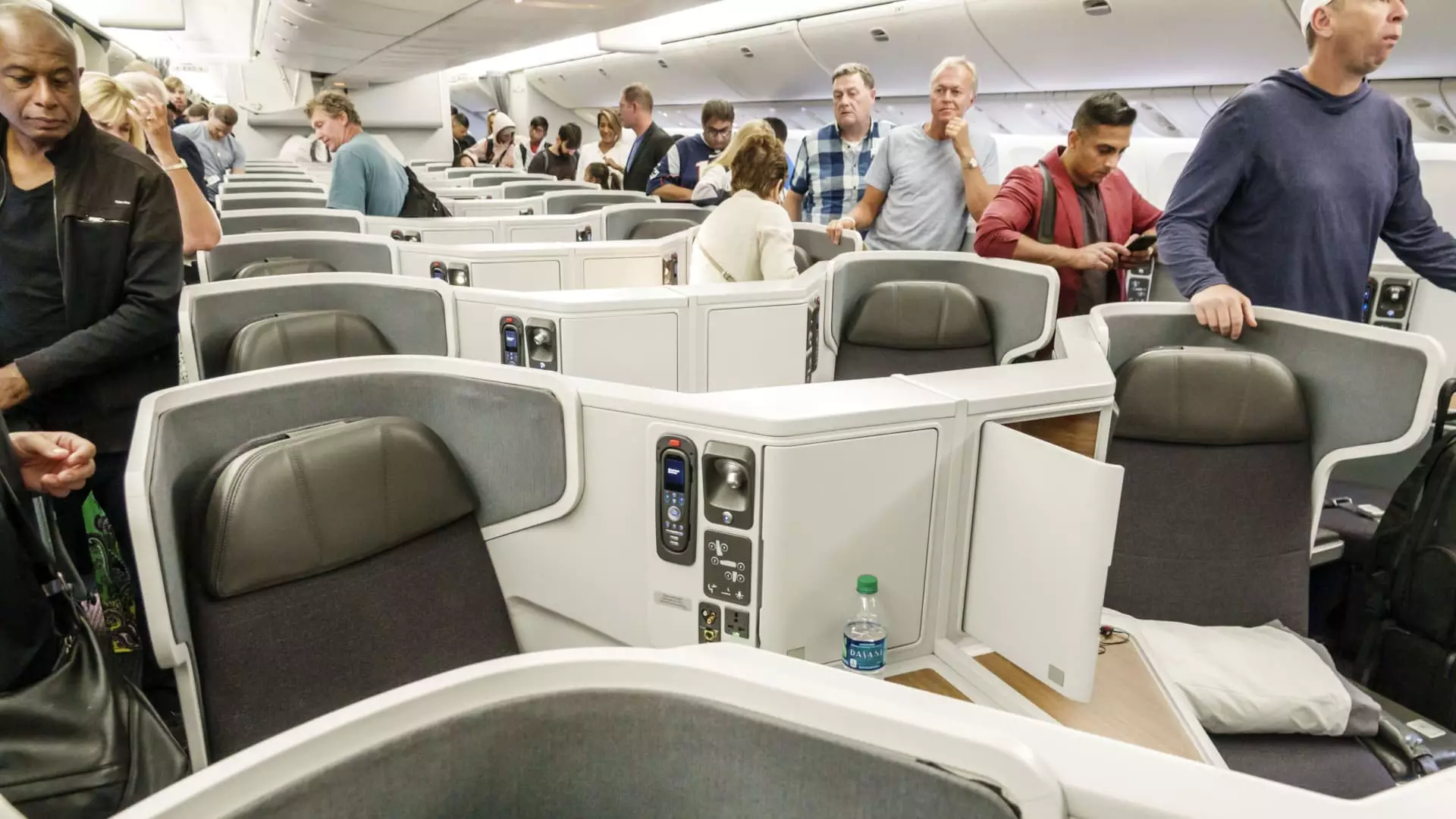The landscape of airline travel is undergoing a significant transformation, particularly in the wake of the COVID-19 pandemic. Travelers, who once relished the idea of securing the cheapest available seats, are increasingly willing to invest in a more comfortable flying experience. As airlines navigate this shift, they find that the traditional model of upgrading frequent flyers is becoming more complicated. The pandemic has fundamentally altered what passengers prioritize during air travel, and as a result, the competition for premium seating has intensified.
Airlines have recognized that demand for premium cabins has surged, leaving fewer options for travelers hoping to snag free upgrades. This rising trend means that those with elite status in loyalty programs face stiffer competition. Factors such as increased booking numbers and diverse fare structures complicate the ability for frequent flyers to enjoy the perks they were once accustomed to pre-pandemic.
A Surge in Demand for Premium Seats
As we move towards the end of 2023 and into 2024, airlines are projecting record demand during peak travel seasons, particularly the holiday period. Even off-peak times, such as early 2025, show promising signs for travelers hoping to secure ample seating. Reports indicate that U.S. airlines are expected to increase their capacity by about 1% compared to the previous year. This trend reflects a broader acceptance of higher fares among consumers, especially on transatlantic routes, where airlines like Delta Air Lines report that first-class bookings have risen remarkably.
The pricing disparity between economy and premium cabins is becoming more pronounced. For instance, a round trip from Newark to Los Angeles might see passengers paying around $347 for standard economy, while a seat in Delta’s luxurious Polaris cabin can soar to $1,791. In a similar vein, American Airlines offers a stark contrast, with coach fares from New York to Paris starting at $1,104, while Flagship Business class tickets could cost more than three times that amount. This shift underscores the importance of premium seating in maintaining airline profitability.
Revenue Models and Loyalty Programs
The increasing allure of premium cabins extends to airlines’ loyalty programs, which have become essential revenue streams. These loyalty programs, once centered around miles flown, are evolving to focus on the amount spent. Airlines are recalibrating their criteria for elite status to reward higher spending, making it essential for frequent travelers to adjust their strategies accordingly.
For example, United Airlines recently announced that it would require customers to spend more to achieve elite status in the coming year. By comparison, American Airlines has chosen to maintain its current requirements, allowing customers to feel a modicum of stability amidst a shifting landscape. The balance between rewarding loyal customers while maximizing revenue is delicate and crucial to airline profitability.
Airlines are not merely reacting to changing consumer preferences; they are proactively innovating their offerings. The rise in demand for premium experiences has prompted carriers from Delta to low-cost operators like Frontier Airlines to enhance their first-class options significantly. Delta, in particular, has shifted its strategy to generate more revenue from its more valuable upper-class service, where profitability had once been overshadowed by free upgrades.
To maintain a competitive edge, various airlines are introducing new segments such as JetBlue’s “junior Mint” and Alaska Airlines’ retrofitting of existing aircraft to include premium seats. The enhancement of services, including lie-flat seats, personalized attention, and better in-flight entertainment options, is a testament to the airlines’ commitment to meeting the evolving demands of their clientele.
The generational shift in airline service preferences has also led to Southwest Airlines reassessing its approach. With plans to introduce extra-legroom seating—while forgoing the traditional first-class segment—Southwest recognizes a growing appetite among younger travelers for enhanced comfort without necessarily overhauling its long-standing service model. Their market research has indicated a consumer willingness to trade-off some seating for an improved travel experience.
Executives highlight that the focus is not just on providing a luxurious experience; it’s about evolving to meet the changing expectations of travelers. In this age, consumers are investing more in experiences that enhance travel comfort, suggesting a seismic shift in how airlines will strategize their services in the years to come.
As airlines continue to adapt to these new realities, it is clear that the post-pandemic world of air travel is one where comfort and premium experiences take precedence. As demand swells, airlines will need to remain agile, adjusting their seat configurations and pricing models to accommodate the modern traveler’s expectations. The future of air travel will increasingly rely on this balance between luxury and value, and how well airlines adapt will determine who thrives in this competitive landscape.

